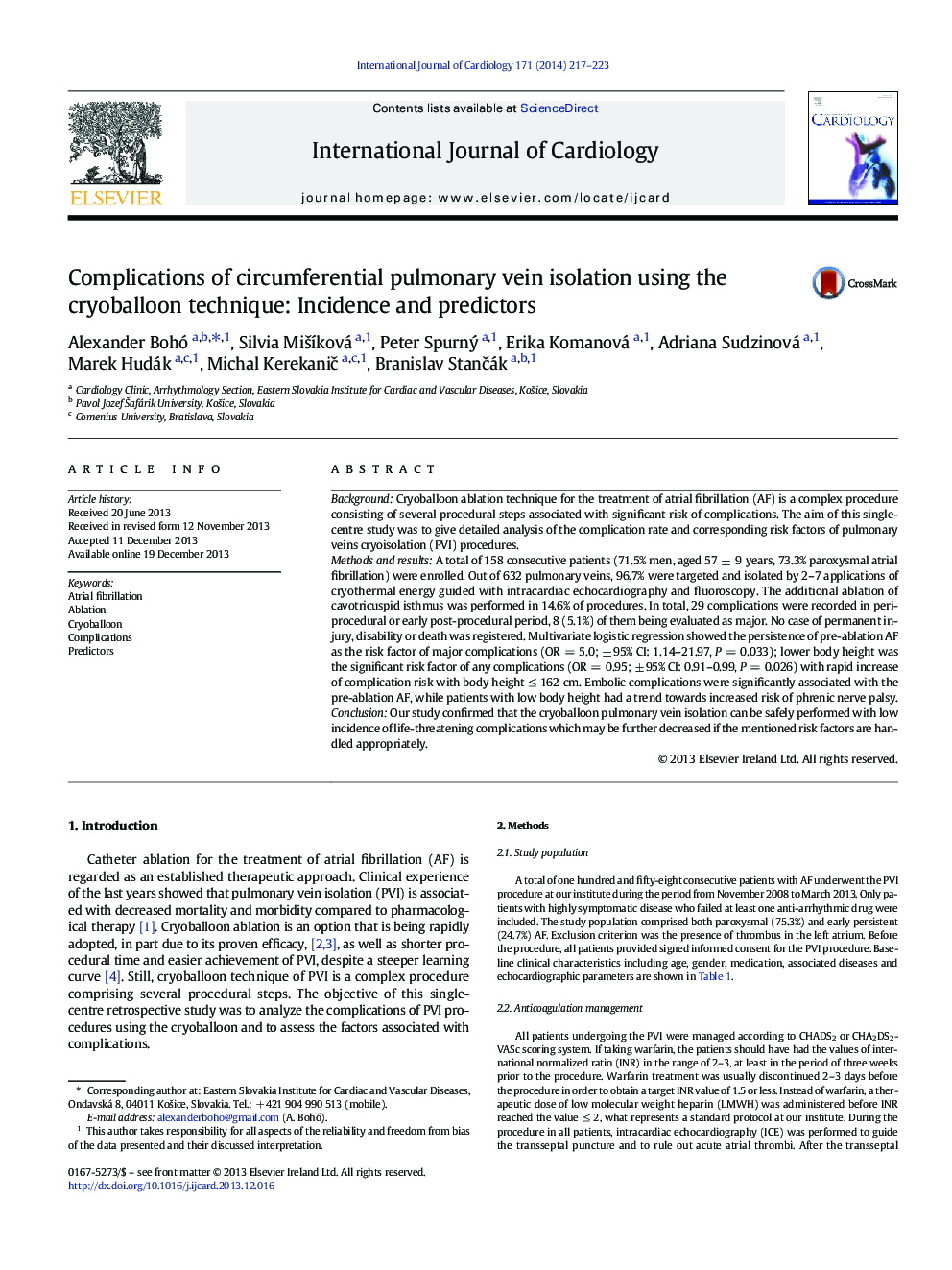| Article ID | Journal | Published Year | Pages | File Type |
|---|---|---|---|---|
| 5973243 | International Journal of Cardiology | 2014 | 7 Pages |
BackgroundCryoballoon ablation technique for the treatment of atrial fibrillation (AF) is a complex procedure consisting of several procedural steps associated with significant risk of complications. The aim of this single-centre study was to give detailed analysis of the complication rate and corresponding risk factors of pulmonary veins cryoisolation (PVI) procedures.Methods and resultsA total of 158 consecutive patients (71.5% men, aged 57 ± 9 years, 73.3% paroxysmal atrial fibrillation) were enrolled. Out of 632 pulmonary veins, 96.7% were targeted and isolated by 2-7 applications of cryothermal energy guided with intracardiac echocardiography and fluoroscopy. The additional ablation of cavotricuspid isthmus was performed in 14.6% of procedures. In total, 29 complications were recorded in peri-procedural or early post-procedural period, 8 (5.1%) of them being evaluated as major. No case of permanent injury, disability or death was registered. Multivariate logistic regression showed the persistence of pre-ablation AF as the risk factor of major complications (OR = 5.0; ± 95% CI: 1.14-21.97, P = 0.033); lower body height was the significant risk factor of any complications (OR = 0.95; ± 95% CI: 0.91-0.99, P = 0.026) with rapid increase of complication risk with body height ⤠162 cm. Embolic complications were significantly associated with the pre-ablation AF, while patients with low body height had a trend towards increased risk of phrenic nerve palsy.ConclusionOur study confirmed that the cryoballoon pulmonary vein isolation can be safely performed with low incidence of life-threatening complications which may be further decreased if the mentioned risk factors are handled appropriately.
